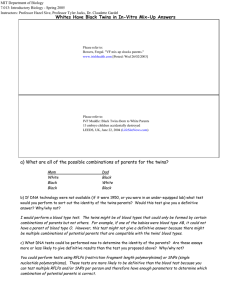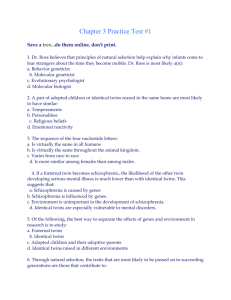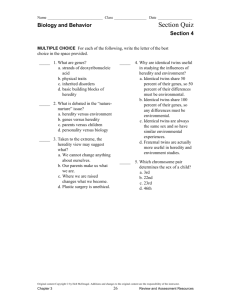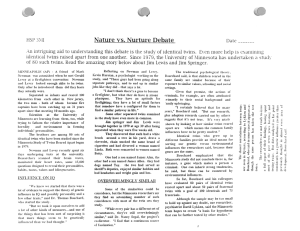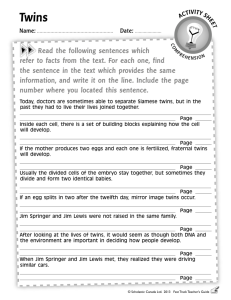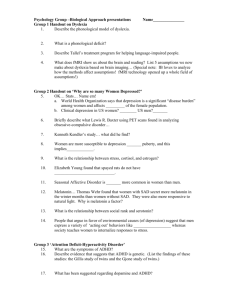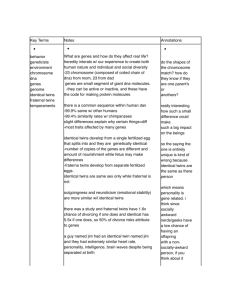Conditional Probability and Independence
advertisement
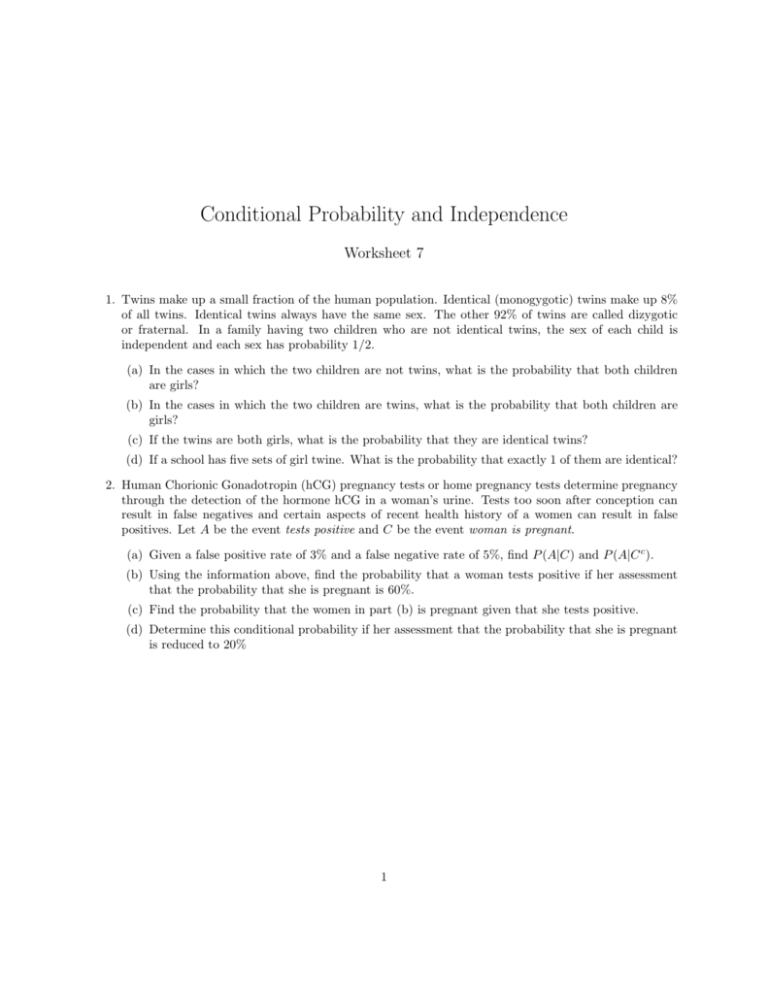
Conditional Probability and Independence Worksheet 7 1. Twins make up a small fraction of the human population. Identical (monogygotic) twins make up 8% of all twins. Identical twins always have the same sex. The other 92% of twins are called dizygotic or fraternal. In a family having two children who are not identical twins, the sex of each child is independent and each sex has probability 1/2. (a) In the cases in which the two children are not twins, what is the probability that both children are girls? (b) In the cases in which the two children are twins, what is the probability that both children are girls? (c) If the twins are both girls, what is the probability that they are identical twins? (d) If a school has five sets of girl twine. What is the probability that exactly 1 of them are identical? 2. Human Chorionic Gonadotropin (hCG) pregnancy tests or home pregnancy tests determine pregnancy through the detection of the hormone hCG in a woman’s urine. Tests too soon after conception can result in false negatives and certain aspects of recent health history of a women can result in false positives. Let A be the event tests positive and C be the event woman is pregnant. (a) Given a false positive rate of 3% and a false negative rate of 5%, find P (A|C) and P (A|C c ). (b) Using the information above, find the probability that a woman tests positive if her assessment that the probability that she is pregnant is 60%. (c) Find the probability that the women in part (b) is pregnant given that she tests positive. (d) Determine this conditional probability if her assessment that the probability that she is pregnant is reduced to 20% 1

